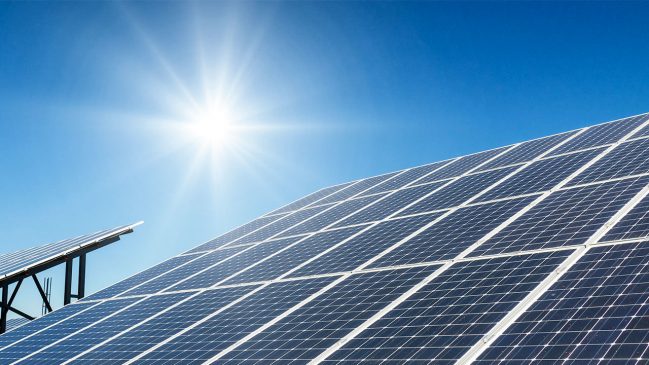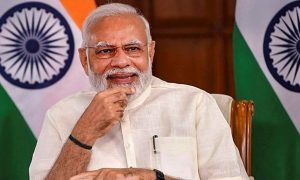For Amit Ray, a 40-year-old businessman from Odisha’s Angul district, the decision to embrace rooftop solar (RTS) energy was taken primarily to save costs. The shift towards sustainability was driven by soaring electricity bills, which were taking a toll on his household expenses. “Investing in solar panels has been rewarding,” says an enthusiastic Ray. “Not only have I reduced my monthly expenses, but I also feel positive about contributing to a greener future.”
Post installation, Ray’s electricity bills reduced by 30%, underscoring the financial viability and benefit of harnessing solar energy. “I spent around Rs 1.30 lakh installing 1.5 kilowatt (kW) of rooftop solar panels for my two-storey house. After the installation, my monthly electricity bill has reduced from nearly Rs 3,500 to Rs 2,300,” says Ray.
Read More: RBI Imposes Rs 1.45-Crore Penalty on Central Bank of India; Details Here
Ray’s story is not only a testament to the cost-effectiveness of solar energy, but also reflects a rising awareness of sustainable practices. Families across cities and semi-urban areas are gradually recognising the benefits of sustainable energy and the conversation has shifted from niche forums to dining table discussions. A push from the government is a reason for this shift.
On January 22 this year, Prime Minister Narendra Modi announced the Pradhan Mantri Surya Ghar Muft Bijli Yojana, under which 10 million low- and middle-income households will get rooftop solar power systems. The scheme aims to offer Rs 75,021 crore in subsidies providing free electricity of up to 300 units per household by installing grid-connected RTS systems. The initiative is projected to generate 30 gigawatts (GW) of solar capacity in residential areas, resulting in a reduction in carbon dioxide emissions over the lifespan of the rooftop systems, which is usually 25 years.
This isn’t the first initiative to promote RTS power systems. Back in 2014, the government introduced the Rooftop Solar Programme, aiming for a total installed capacity of 40 GW by 2022. However, the goal wasn’t met, prompting the government to extend the deadline to 2026. The new scheme is another attempt to achieve the 40 GW rooftop solar capacity target. “Since 2016, household RTS capacity in India has grown to 2.7 GW with 700,000-800,000 households being powered by solar energy. It can take another five years to set up an additional 25-30 GW,” says Vikas Agarwal, Co-Founder and Chief Business Officer of Credit Fair, a consumer lending fintech start-up.
Read More: PM Modi’s Strategic Dialogues With Meloni, Macron, Trudeau, Zelensky At G7 Summit | Top 10 Points
According to the Ministry of New and Renewable Energy’s (MNRE) website, the total installed capacity of solar power in India has reached around 82 GW as of April 2024. Meanwhile, grid-connected RTS is around 12.01 GW as of April 2024. “Even though the MNRE launched the Rooftop Solar Programme Phase-II in 2019 and the PM Surya Ghar [Muft Bijli] Yojana, the adoption of RTS has not met expectations due to a lack of awareness and financing options. However, with government support and initiatives like no-cost EMIs, we are hopeful of increased demand and adoption of RTS,” adds Agarwal.
Here is a guide for those who want to instal a residential RTS power system.

COUNT THE COST
Though installing rooftop solar panels is a bright idea, there is a substantial cost involved as solar panels are mounted on building roofs and are connected to the main power supply unit. “The set-up reduces dependence on grid-connected electricity, resulting in significant cost savings for consumers,” says Sandeep Sahoo, Partner at Odisha-based Prakruti Energy, a wholesaler of solar panels. However, there is an initial fixed cost involved. “For example, for a 1 kW connection, the set-up costs around Rs 90,000, for 2 kW the expenditure is around Rs 1.5 lakh, and for 3 kW, the cost is Rs 2 lakh,” he adds.
Apart from the sanctioned load, the cost of setting up also depends on the type of solar panels. For instance, the primary types are poly panels, mono panels, and bifacial solar panels.
Polycrystalline or poly panels feature multiple crystals in each cell, giving them a blue look. They are made by melting raw silicon, which results in several crystals forming in each cell. Therefore, they have a lower efficiency compared to monocrystalline panels as the presence of many crystals can inhibit the movement of electrons. This reduces the panel’s energy output.
However, they offer a more affordable solution and are ideal for large roofs without any space constraints. Mono panels are recognised by their dark black colour and uniform appearance. They are built with a single silicon wafer and are more expensive than poly panels. Lastly, bifacial solar panels can absorb sunlight from both sides. They are designed to generate power from the front side while capturing reflected sunlight from the rear side. This dual action can significantly increase the total energy yield.
“Each type of solar rooftop panel offers unique advantages. The choice ultimately depends on your budget, space constraints, amount of sunlight received, and electricity needs,” says Sahoo.
He advises customers to opt for mono panels as the government subsidy calculation is based on this type of panels.
Some of the popular names in the rooftop solar panels space are Tata Power, Adani Solar, Jakson Power, Waaree Energies, Vikram Solar, RenewSys and Servotech Power Systems.
How much time does it take to break even? Considering that 1 kW produces 120 kWh of energy, total yearly savings from a 3 kW solar plant, assuming an average price of Rs 7 per unit, amount to Rs 30,240. Additionally, factors such as increasing grid electricity tariffs, availability of financial incentives, and net metering also influence the total long-term savings. However, it is important to note that a 3 kW solar system costs around Rs 2 lakh without subsidy. After accounting for subsidy, the cost reduces by 39%—to approximately Rs 1.2 lakh. Hence, it typically takes around four years to achieve the break-even point before benefits from solar energy start flowing in
For those who want to instal RTS but are hindered by the high initial costs, there are many banks and fintechs registered on the scheme’s website that provide financing options. “For an average household requiring a 3-5 kW installation, the cost can range from Rs 1.75 lakh to Rs 3.5 lakh. This expense can be managed through subsidy and manageable EMIs of around Rs 4,000-5,000 per month, equivalent to monthly electricity bills, thereby alleviating the financial burden, advise industry watchers and stakeholders.
“We aim to keep the EMI equal to electricity bills, ensuring no additional burden on the consumer,” says Agarwal. Credit Fair offers no-cost EMIs where the interest cost is borne by a vendor. Regular EMIs are offered at a flat annual interest rate of 9-10%.
SUBSIDY SUPPORT
If you plan to instal rooftop solar panels for a residential household, you can apply for a subsidy under the PM Surya Ghar Muft Bijli Yojana. Under the scheme, there is a subsidy of Rs 30,000 per kW up to 2 kW and Rs 18,000 per kW for additional capacity up to 3 kW. However, the total subsidy for systems larger than 3 kW is capped at Rs 78,000.
A consumer can apply for the subsidy through either discom-tendered projects or the National Portal of India, as stated by Minister of New and Renewable Energy R.K. Singh in a written response to a Lok Sabha query last year.
“On the national portal, consumers have the option to select any vendor and choose the brand and quality/efficiency of the solar equipment. The discom’s role is limited to issuing technical feasibility approval, installing the net meter, and inspecting the system,” Singh said in Parliament. Once the system is installed and inspected, the subsidy is deposited directly into the bank account of the consumer.
There are, however, a few things that one needs to keep in mind when applying for a subsidy. First, the solar panels should be manufactured in the country, as subsidies are not available for panels not assembled in India. Second, the electricity connection should be in your name and one cannot apply for more than 85% of the existing sanctioned load. Moreover, there should be consistency in your name in all the documents.
“It is very important to ensure that there is consistency in your name across your bank account, electricity bill, and Aadhaar card. The subsidy may not be transferred if there is a mismatch. Additionally, the connection should be in your name and not your forefathers’,” explains Sahoo of Prakruti. Moreover, one always needs to ensure that a vendor is registered with MNRE to get subsidy benefits.
NET METERING
This net metering initiative enables you to lower your electricity bills during sunnier days and even sell surplus energy back to the grid, offering an opportunity to have an additional income. It helps in feeding the excess units back into the grid when more energy is produced than consumed.
The energy meter essentially ‘nets’ out the power that was consumed and the power that was generated. In practical terms, a homeowner might use a certain amount of electricity during peak sun hours and then feed the same or a greater amount of solar-generated electricity back into the grid.
Hence, one primary advantage of net metering is that it provides financial credits to solar energy users.
“The excess units generated in a month get adjusted in the next bill. Then at the end of the financial year, the discom pays you for surplus units generated in the last 12 months at 75% of the existing rates,” says Agarwal.
However, it is important to note that grid-connected solar systems cannot supply power during outages unless equipped with a separate battery for operation.
“In regions experiencing prolonged power cuts, grid-connected systems become ineffective due to the absence of power backup. Incorporating a battery into the grid-connected system could potentially resolve this issue. However, the government subsidy does not cover the installation of such hybrid systems,” says Sahoo.
Regular cleaning of panels is another point to keep in mind. “I need to clean solar panels every 15-20 days as dust gets accumulated. It does not take much time but I need to do it regularly,” says Ray.
Last but not least, installing the system and getting the subsidy can be a time-consuming process at times. “Though MNRE is pushing very hard, at times discoms do not provide technical feasibility reports on time, which delays the whole process. Similarly, net metering takes time,” says Agarwal.
The storage capacity of discoms is another issue that needs to be resolved before the government plans to expand the RTS footprint in the country. “Discoms do not have enough infrastructure capacity currently. For 40 GW, we need to come up with more infrastructure and storage facilities for discoms,” says Agarwal.
As India marches on to reach the full potential of harnessing solar energy, a few bottlenecks need to be fixed before RTS can bring a ray of hope to more people’s lives—just like it has to Amit Ray.





































